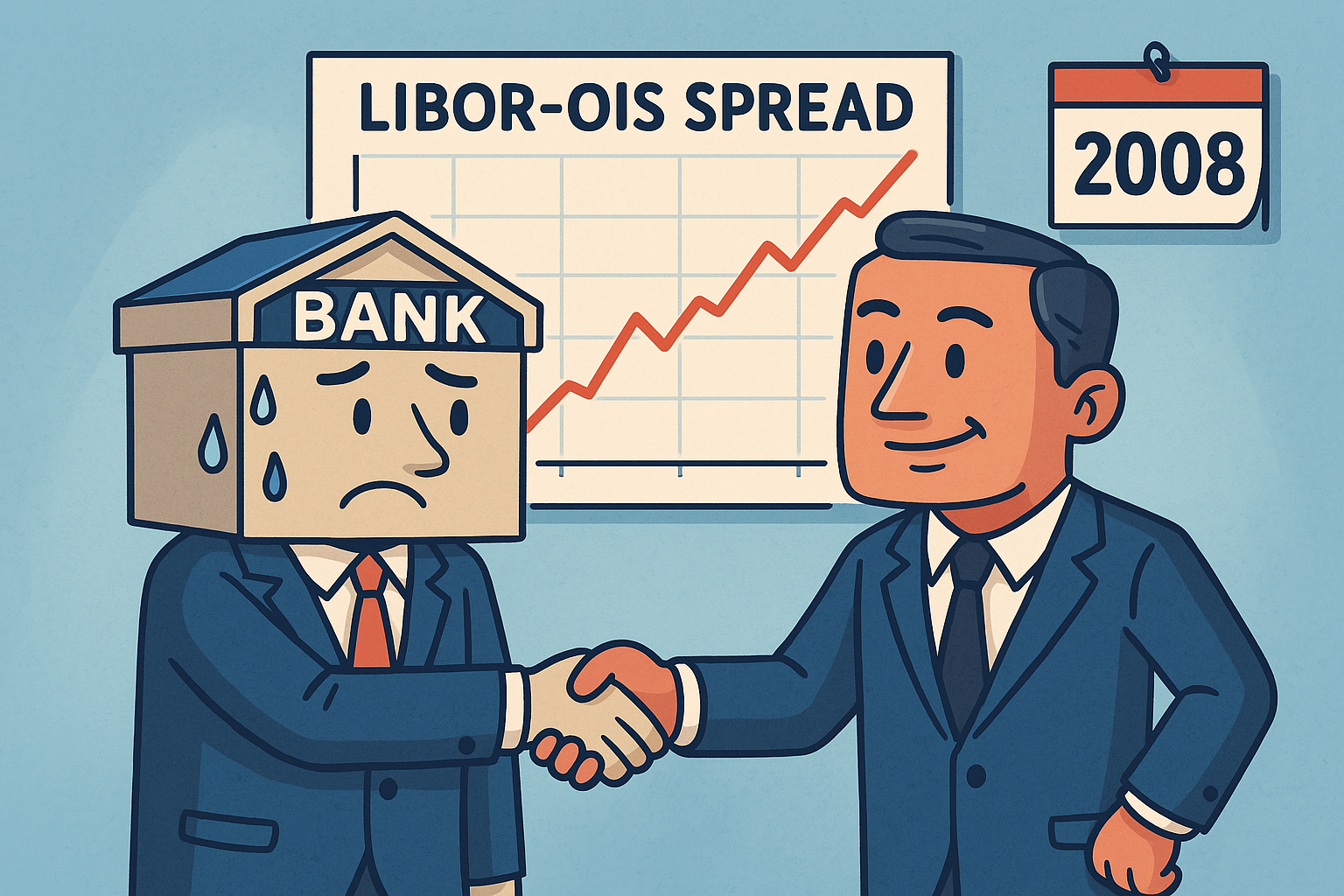
What’s the LIBOR-OIS Spread?
Imagine two friends, Sara and Jake.
- Sara is the chill lender. She usually lends money with almost no worries.
- Jake is your typical big-bank type—confident, always borrowing cash to do stuff.
Now one day, Sara suddenly asks Jake for way more interest than usual. Why? Because she doesn’t trust Jake to pay her back as easily anymore.
That’s basically what the LIBOR-OIS spread measures:
How much banks trust each other.
LIBOR vs OIS – In Plain English
| Term | What it Means | Think of it Like… |
|---|---|---|
| LIBOR | The interest rate banks charge each other for short-term loans | A trust-based “friend loan” rate |
| OIS | The risk-free interest rate set by central banks | A super-safe, no-drama benchmark |
So the LIBOR-OIS spread = LIBOR – OIS
If this number gets really big, it means banks don’t trust each other much.
What Happened in 2008?
In 2007–2008, this little number started climbing fast.
Banks were still smiling in public… but behind the scenes?
They were whispering:
“I don’t know if I trust you anymore.”
The spread went from a normal 0.1% to over 3.5% in some cases!
That’s a panic signal. But guess what?
Most people missed it.
Why It Was a Big Deal
- When banks stop trusting each other, they stop lending.
- No lending = no cash = businesses can’t pay workers, fund operations, or survive.
- This leads to… 💸 crash city.
So this tiny number—just a decimal, really—was screaming that something was wrong.
But barely anyone was listening.
You don’t need to be a Wall Street pro to understand the basics.
Learning to spot it now = being smarter than most investors were in 2008.
The LIBOR-OIS spread tells us how confident (or scared) banks are.
It’s one of the early-warning signs of a financial crisis.

